How To Set Up Bindings On A Snowboard
If your new to snowboarding, setting up your board and bindings can experience like a daunting job with an endless list of width, angles and direction combinations to choose from. Luckily for you, we are here to help make setting upward your new board a breeze. Hit play above or ringlet down through our extensive guide on how to properly determine whether you are regular or goofy footed, as well as recommendations on finding a stance width and binding angles that will be comfortable to suit your riding style and power.
Here's what we'll cover:
- Snowboard Stance
- Binding Position
- Stance Width & Angle
- Mounting Your Bindings
- Binding Settings
- Stomp Pads
SNOWBOARDS
BINDINGS
BOOTS
Snowboard Stance
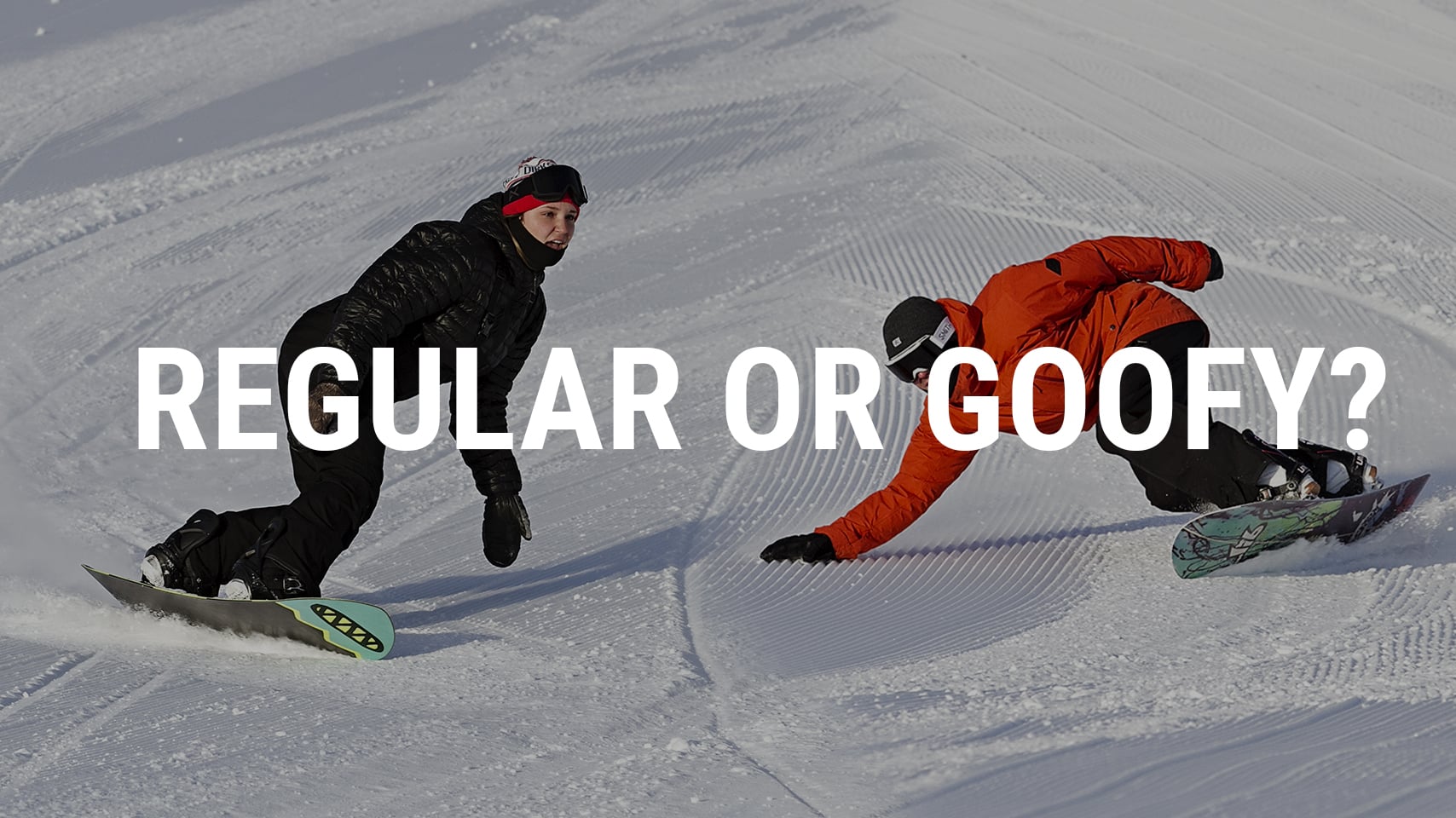
Determining if you are regular or goofy is the first matter you will demand to do earlier you brainstorm to set upwards your new snowboard and bindings. The terms regular and goofy refer to which foot you atomic number 82 with while riding. Regular riders have their left foot facing downhill and goofy riders do the opposite, leading with their right pes. We recommend starting with your more ascendant human foot in the rear. For instance, if you kicking a soccer ball with your correct foot yous will most likely prefer a regular stance. If yous have ever surfed, skated or done any other type of board sport then we suggest starting with the opinion that worked for you in the past.
Your fix is easy to adjust. If regular stance doesn't feel comfy, switch things up and endeavour goofy, or vice versa.
Binding Position
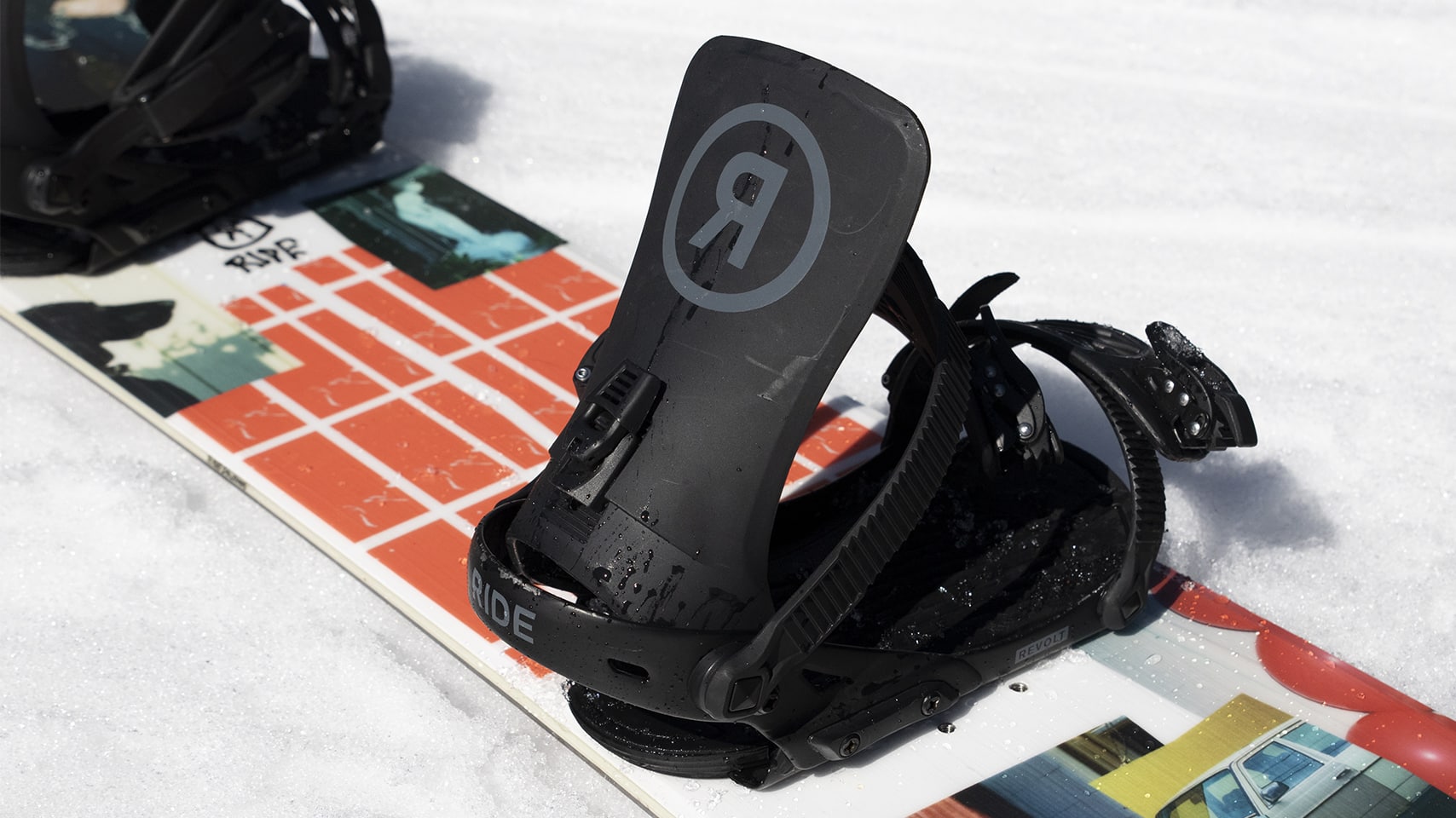
With your ideal stance determined, the side by side step is to set the placement of your bindings. Proper bindings placement differs slightly depending on whether y'all're riding a twin, directional or asymmetric snowboard. It is recommended that you reference the "Recommended Stance" markings on the top of your board when mounting your bindings.
If you are unsure what the shape of your board is please reference our, Snowboard Shapes - Explained guide for further assistance.
CENTERED STANCE
The term "Centered Opinion," refers to having your bindings placed symmetrically between the nose and tail of your board. Beginners tin benefit from a centered stance every bit it will permit them equal nose and tail lengths for maximum control. Advanced freestyle riders also prefer a centered stance as it makes landing tricks and riding switch a breeze.
SETBACK Stance
A "Setback Stance" is divers when the bindings are shifted toward the tail of the board rather than placed symmetrically between the nose and tail. Positioning your bindings towards the tail of the board will assist reduce fatigue when riding powder and in some cases assist add energy and drive when initiating turns on hardpack. Many advanced freeride and all-mountain freestyle riders adopt this blazon of opinion.
*Note you lot never want to have your bindings mounted closer to the olfactory organ than the tail.
Opinion Width & Angle
Once you have determined how your bindings will be placed on your board you lot will need to decide a comfortable stance width.
When determining your stance width, it is important to remember that at that place is no right or incorrect altitude for how wide or narrow your stance is. What is important is that you are comfortable. Most boards volition have reference points designated on the tiptop sheet of the snowboard. This is a expert place to start simply ultimately the decision is up to you and what you lot feel is about comfy.
To go a skilful feeling of what your correct stance width may be, start past standing in a power stance with your knees adjustment just outside of your shoulders. This type of stance volition allow you the nigh balance and is keen for jumping, leaping and lunging. Once you discover a width that feels salubrious, measure out the altitude between your feet starting at the eye of each human foot. You lot will use this measurement when placing your bindings on your lath.
If you are unsure where to outset, the table below recommends a stance distance based on your height.
| Pinnacle (in feet) | Width (in inches) |
|---|---|
| < 5'ane" | 17-18" |
| five'2" to v'4" | 18-19" |
| v'5" to 5'8" | 19-20" |
| 5'9" to 6' | twenty-21" |
| > half dozen' | 22-23" |
STANCE ANGLES
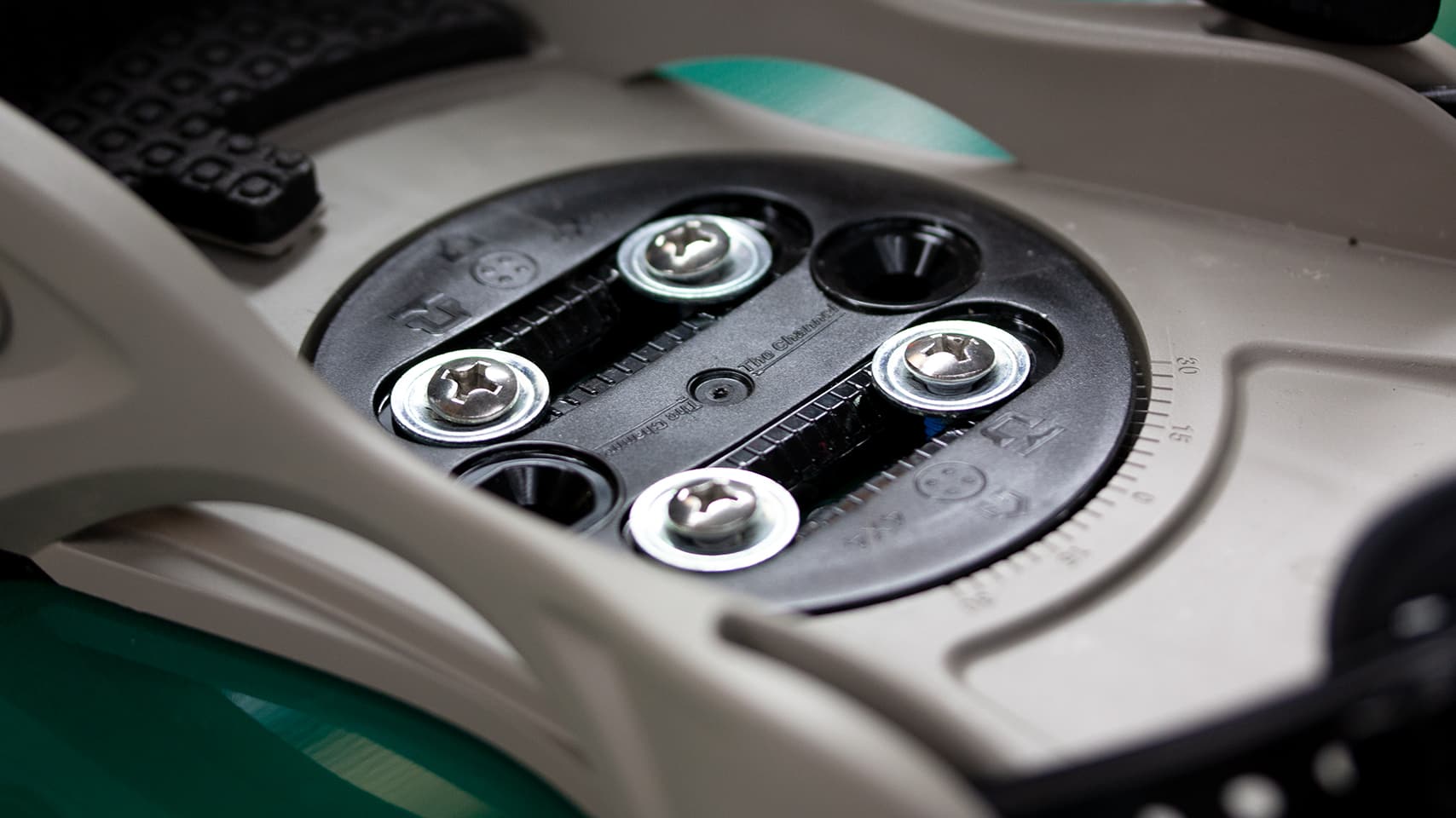
Proper stance angle is cardinal for long term comfort on the mountain. If your bindings are not properly angled you can put unnecessary and often painful strain on your calves and knees resulting in shorter, less enjoyable days. You can adjust the angle of your binding with the mounting disc in the center of your binding. On your binding baseplate where the disc fits into the bounden, you will meet dash marks with a number every fifth marking. These dash marks are your angles. Prepare the disc with the indicator arrows pointing to the angle you lot want and mount the whole thing onto your board. Make sure yous measure out your width and set dorsum and then you lot are mounting them in the right place.
Dissimilar styles of snowboarding use dissimilar opinion setups. Nearly snowboarders adopt a "duck" opinion, where your feet are slightly angled away from each other, while some freeride or all mount snowboarders prefer to take both feet angled towards the front of the board. A mutual prepare upward for beginners is around -5 degrees on the back foot and +15 degrees or less on the forepart foot. We don't recommend going by -21 degrees on your back foot considering it puts a lot of strain on your knees. Notwithstanding, it'south all nigh comfort and what works for one person may not work for you lot.
There is no specific mode to set up a snowboard then exercise plenty of experimenting and tweaking as you progress. Pocket-sized changes can take a large affect on the way a lath feels and responds.
Mounting Your Bindings
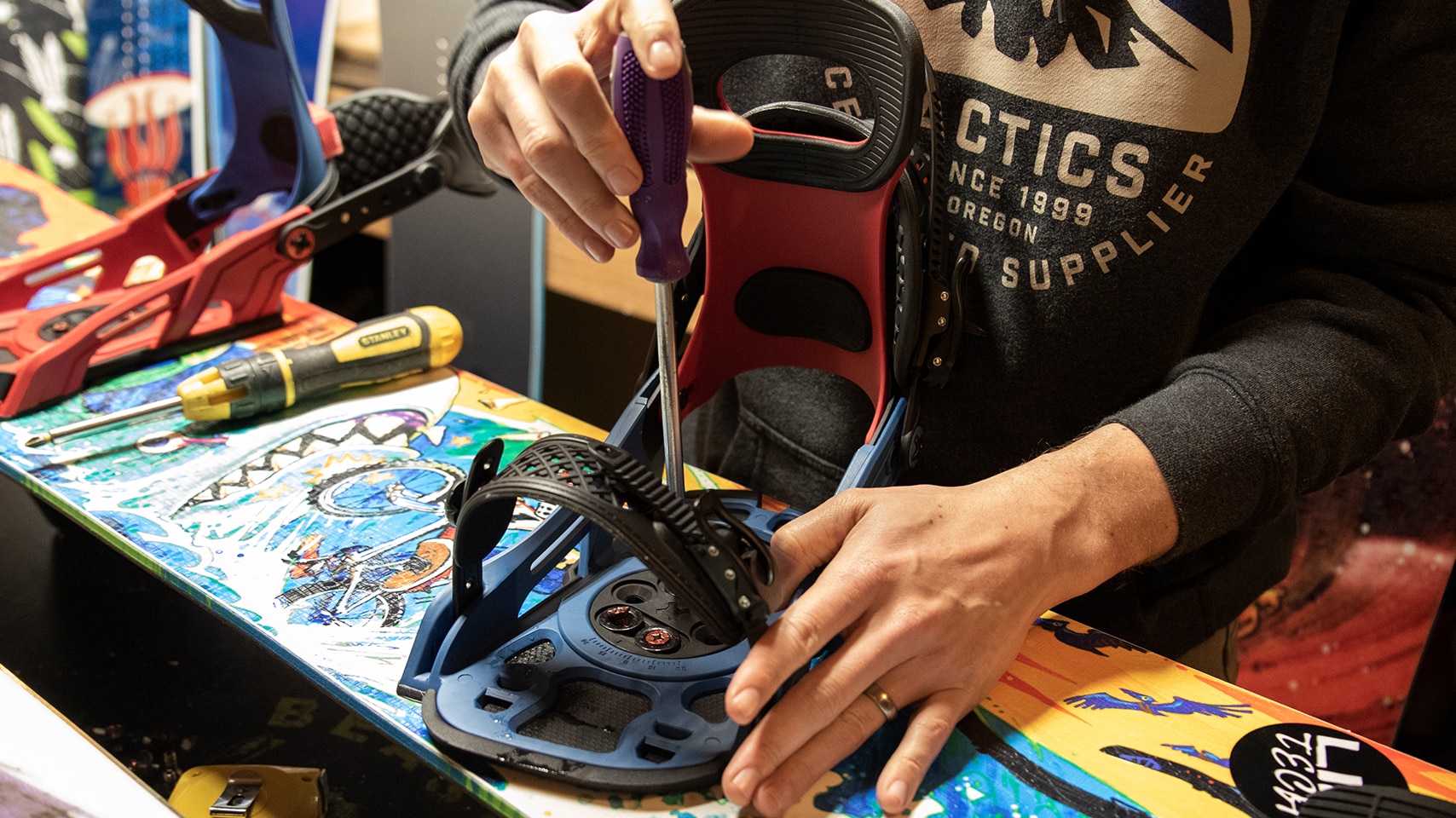
Once you've figured out where to put your bindings, it's fourth dimension to spiral them in. Get-go, align the baseplate holes with the inserts that best match your desired stance width. Remember when dialing in our stance width to measure out from the eye of one binding to the next.
Next, rotate your binding around the disc until you've reached the bending you desire. Making certain that the base of your bounden is centered beyond the width of your board (with no office overhanging), carefully spiral the bindings into identify.
WARNING: Never overtighten your screws and never use a bonding adhesive such equally Loctite. Doing so may void your snowboard warranty.
Binding Settings
HIGHBACK & Frontwards LEAN ADJUSTMENT
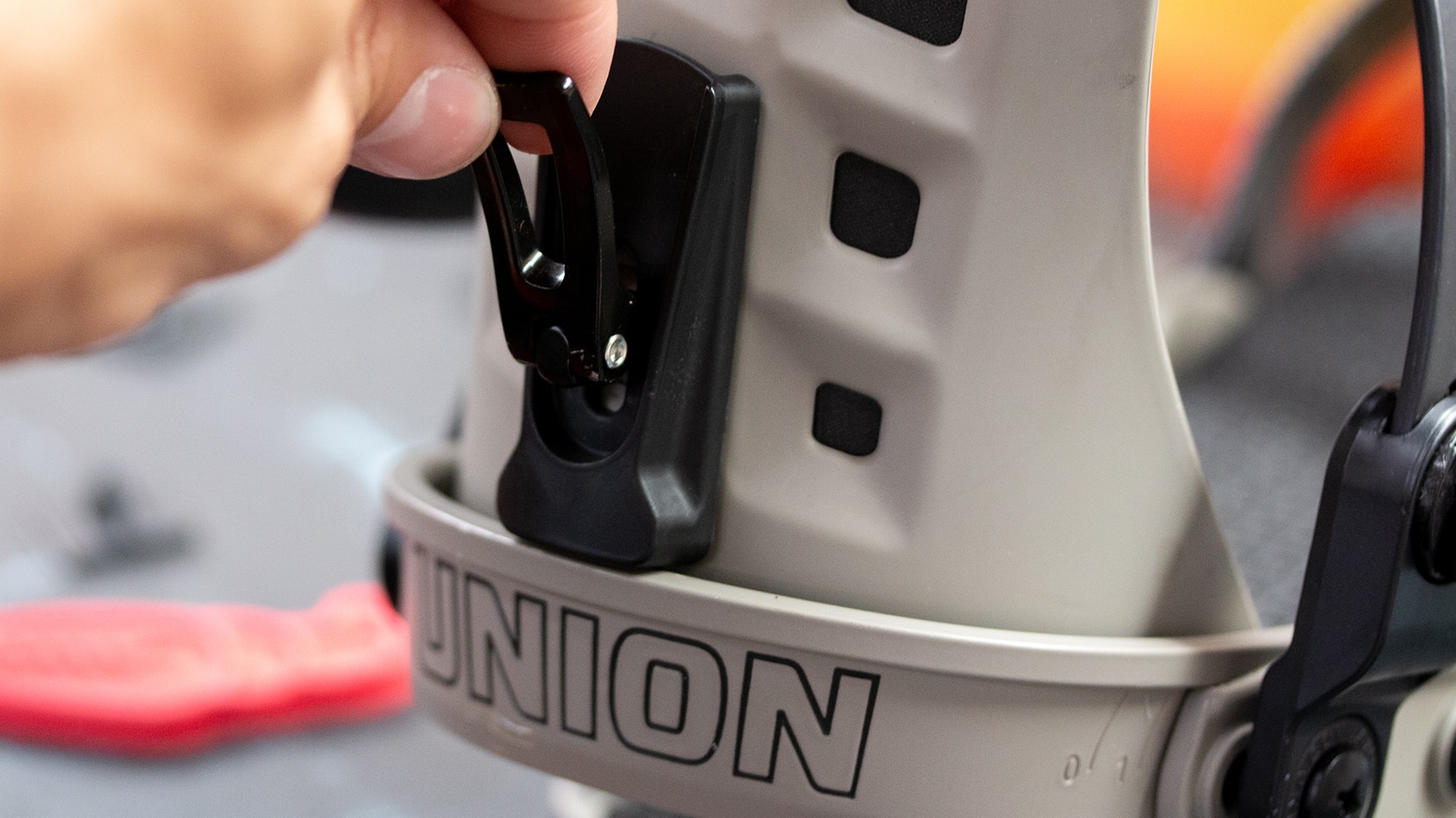
Now that you lot take your bindings mounted on the board, it'southward time to adapt the bindings themselves. Adjusting the angle of the high back or "Forward Lean", volition accept a large impact not only on the style the lath performs but on your torso posture.
Angling your high back forwards will force your knees to bend giving y'all a lower center of gravity and more aggressive stance. This is cracking for one-half pipe and big mount riding because it provides meliorate leverage and command for powering through turns. The drawback is that it restricts your leg movement, which makes information technology harder to catch yourself or brand corrections when buttering a box or locking into a rail. Many urban and rail oriented riders prefer to have their high backs pushed as far dorsum every bit possible, while some big jump enthusiasts like to crank up the forward lean for border control in the landings and take off. As with everything else, it'due south all personal preference and you lot volition have to practise some experimenting and tinkering to figure out what works best for y'all.
TOE RAMP & FOOTBED Adjustment
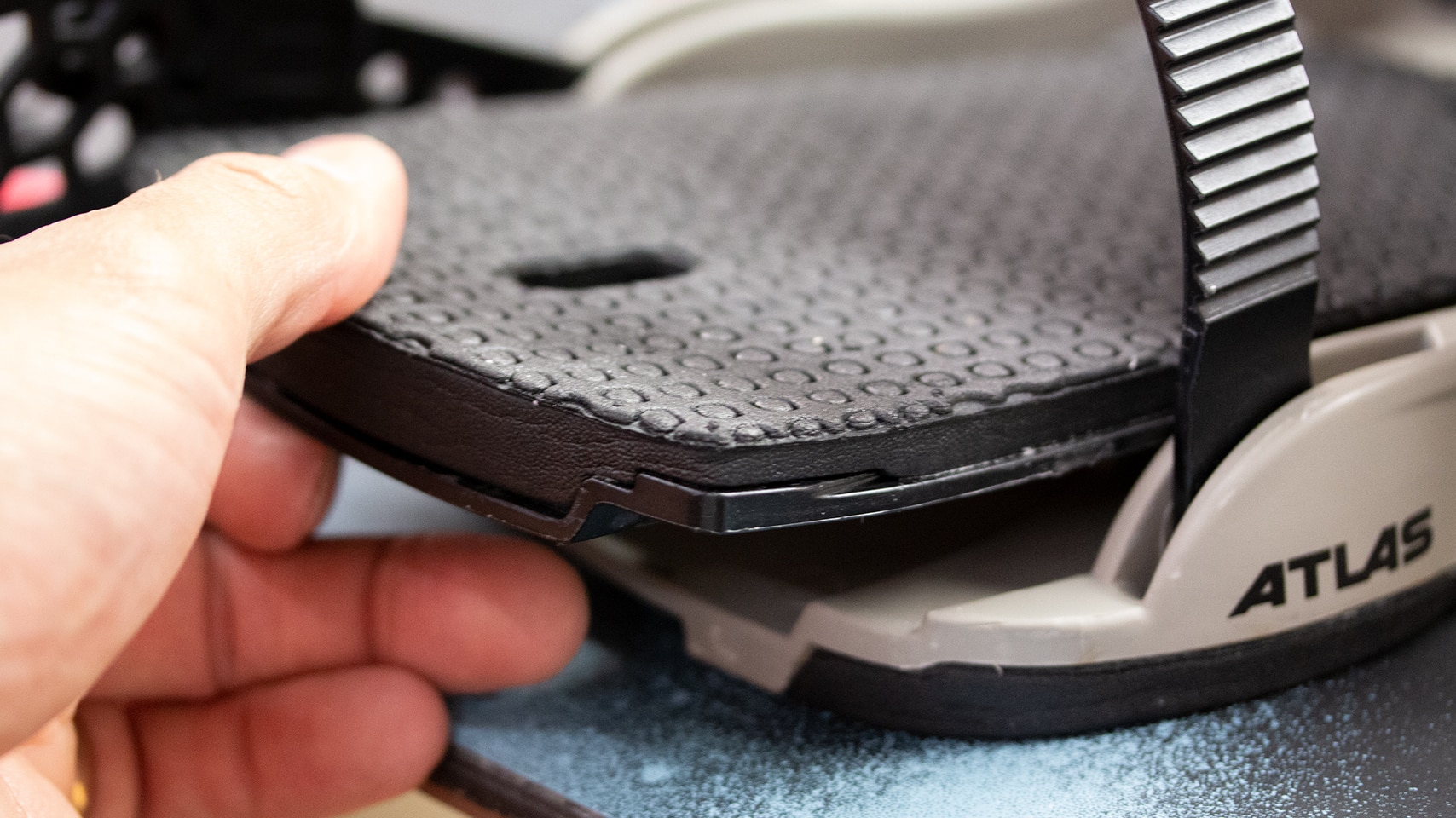
Some bindings may require adjusting the toe ramp/footbed to pair upward with your kick size. If and so, put your boot in the binding and adapt the toe ramp/footbed to line upwardly with the edge of your toes. This will ensure yous're getting proper leverage when riding.
STRAP Aligning
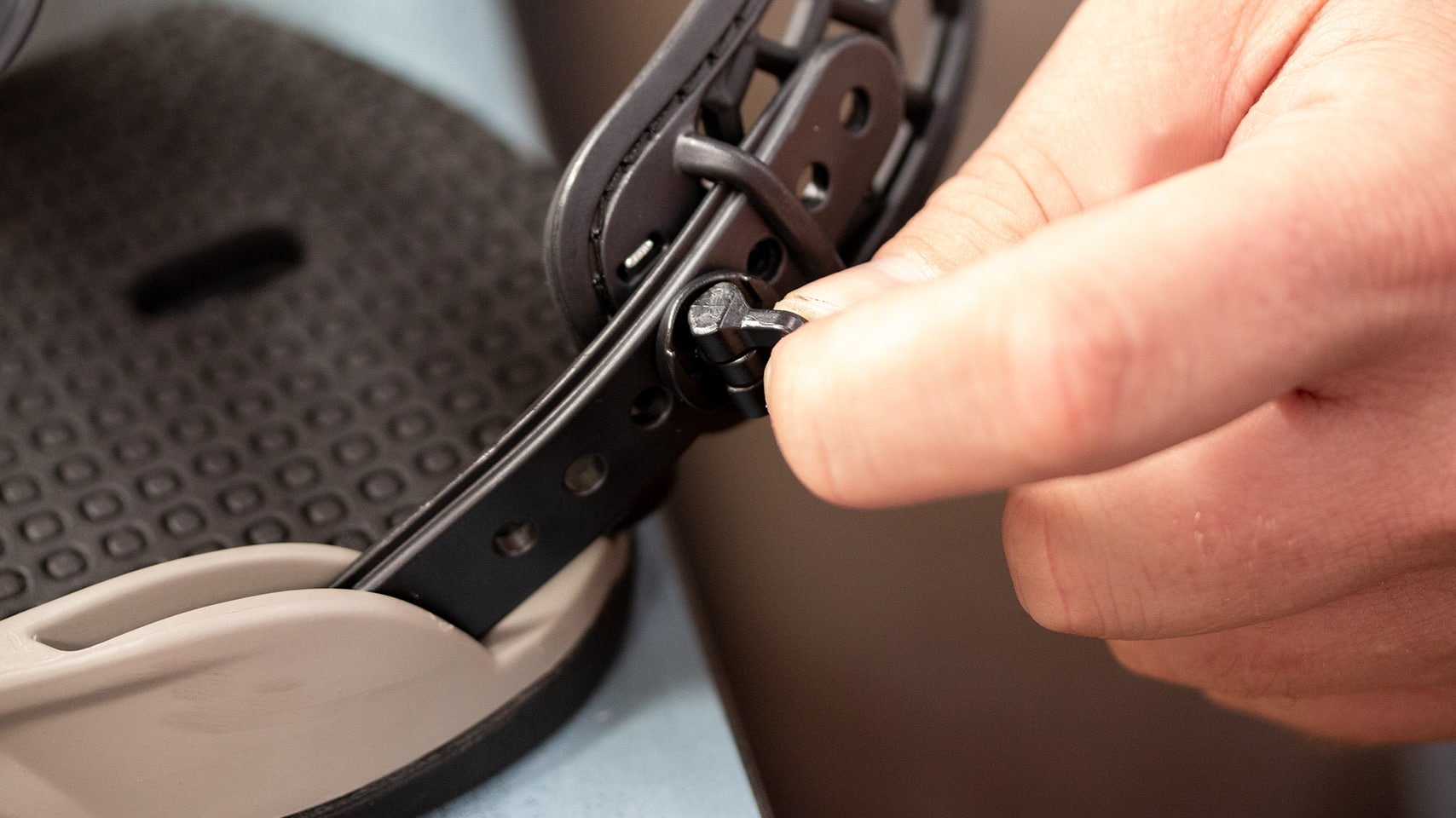
The last thing you will desire to do is brand sure your straps are adjusted properly to fit you boots. Place your boots in your bindings and make sure both the toe strap and the ankle strap tin properly latch and tighten without causing you discomfort. Yous want the straps to be centered on your boot when fully tightened. This will help push button your heel back into your binding's heelcup for a secure fit and better leverage when turning.
Stomp Pads
The summit of your snowboard can be very slick which tin make skating through the elevator line and unloading at the top of the lift a little treacherous at times. Luckily for you, there are snowboard specific traction devices called stomp pads that provide added grip to keep y'all on your feet. Stomp pads come in various shapes, sizes and materials but all serve a unmarried purpose; provide actress grip and stability when you need it most. Typically, stomp pads are placed between both bindings where your rear foot will rest when waiting in the lift line or while practicing your best Scott Stevens one-footed maneuver in the park. Other forms of traction tin can be placed almost the edges of the board in key places to provide ameliorate leverage when performing grabs.
Shop All Stomp Pads
KEEP LEARNING
Withal Have Questions?
Nosotros're hither to help. Yous can call, e-mail, chat or IM during business hours seven days a week. Our client service staff skates…a lot. They know their stuff and are happy to help you with all things skate.
- 888.450.5060
- info@tactics.com
Source: https://www.tactics.com/info/how-to-set-up-a-snowboard





0 Response to "How To Set Up Bindings On A Snowboard"
Post a Comment